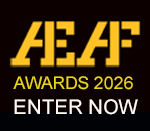TV Series
Silo - Season 2
Outpost VFX
Video unavailable for public viewing
Outpost VFX returned to the world of Silo for a second season, this time delivering over 250 shots encompassing environments, FX and compositing.
In addition to revisiting and enhancing some of the key environments from the first season of the show, including the digger void and the generator room, Outpost were tasked with the vast submerged sections of Silo 17, which the main character infiltrates in season two. The majority of this was shot in a water tank with a minimal set.
From an asset perspective Outpost had to replicate the work on the main silo above the water line undertaken by Rodeo using their asset as the base, on to which we had to scatter underwater algae, decay and plant life, as well as damage from an uprising. It was important to make it recognisable as the same silo we’ve seen above water whilst creating a unique character for the underwater environment. In 3D terms the asset was very large, with action covering the whole expanse of the Silo, which posed a technical challenge in the scattering of debris and plant growth as well as lighting.
We were working with 12 individual floors that were arranged to repeat, so we built a tool that allowed us to add more floors when needed for the ascent and descent, but this in turn meant we needed a scatter system that could sit on the top of everything to avoid recognisable repetition.
We did a lot of research, both scientific and visual, into the properties of water and what happens to light underwater. The overall underwater effect was created in comp by balancing the volumetrics and fall-off of red light as well as all the optical effects such as distortions and aberrations of both the camera lens and the water volume.
Tracking and layout were particularly challenging tasks for the underwater sequence. Everything was shot underwater in a tank meaning that fixed points used to track had an independent motion from the camera due to water distortion. Horizontal travel of Julliette allowed the shoot teams to create a sense of vertical travel by a combination of physical movement through the tank and additional sense of travel caused by moving the camera. It meant, however, that the actors and stunt performers were always fighting natural buoyancy. On top of that, bubbles often travelled in the wrong direction for selling the motion of vertical travel. Our layout teams had to reconcile horizontal and non-linear travel in a sequence of shots that mapped Juliette’s vertical descent and ascent to the lower bridge level.
We added lots of additional particulates and bubbles to populate the water space around Juliette and create a sense of 3D volume and movement. We blended a combination of 3D simulated bubbles and particles with Nuke particle systems.
Moreover, we had to simulate the water surface from below, revealing something of the Silo above it and showing the light from the IT level. We ended up having to have several different simulations depending on how close we were to the water surface. Due to the way Arnold shaders work with refracted light, we had to develop an approach to allow the above water Silo to be rendered and comped separately to the main silo below the surface of the water.
There were several full CG shots in this sequence, such as the cow farm, that were essentially placeholder blanks in the edit, and had significant creative input from the team.
SOFTWARE
Houdini, Maya, Nuke



